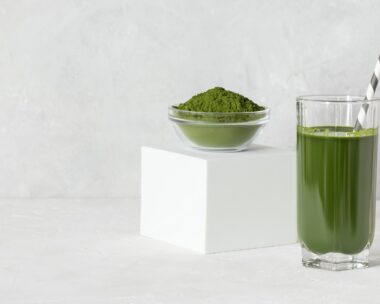Australia’s lactose intolerance is on the rise.
Between 2011 and 2015, the number of Australian adults who considered themselves as being lactose intolerant grew by 240,000 people — with Australian women between the ages of 25-34 the largest demographic to be affected.
Apart from having to say goodbye to some of your favourite dairy delicacies (sigh), lactose intolerance can come with a range of unpleasant symptoms and side-effects that, unless properly dealt with, can lead to to a decreased quality of life.
Here, we take a deeper look at lactose intolerance.
What is lactose intolerance?
Although it’s possible to be born lactose intolerant, some people develop it as they get older. So while you used to enjoy your muesli and milk each morning, it can explain why for some people this is now causing a lot of discomfort.
Simply put, lactose is the sugar that occurs naturally in dairy products. In order to break down and properly digest lactose, our bodies require help from an enzyme called lactase. As we grow older, our bodies begin producing less and less lactase, causing some people to develop a lactose intolerance.
While many are fast to rule out dairy completely, this can take a negative toll on the body’s nutrition levels. A good source of calcium, foods such as milk, cheese and yoghourt provide other essential nutrients including vitamin B12, magnesium, potassium and zinc.
Thankfully, it’s not all bad news. Some brands now offer lactose-free variations of dairy favourites. Jalna new Lactose Free Pot Set Yoghourts are packed with the same dairy goodness, probiotic benefits and creamy taste of their regular yoghourt so people with lactose intolerance can enjoy their serving of yoghourt worry-free.
What are the symptoms of lactose intolerance?
Symptom: Abdominal bloating
Bloating and abdominal discomfort are common symptoms of a lactose intolerance. If you find your belly uncomfortably protruding after a large latte, it could be due to a build-up of lactose.
Here’s the science: When lactose can’t be broken down, it passes through the gut and into the colon. Not able to be absorbed by the small intestine, lactose begins to be fermented and broken down using naturally occurring bacteria that lives there. Within this process, gases are released and that can lead to stomach cramping; the increase in water and gas causing the gut wall to stretch and bellies to bloat.
Unfortunately, bloating depends on each individual and not the amount of lactose ingested, which means it’s important to get yourself checked out by a doctor (a real-life doctor — no Googling) if you’re experiencing stomach pain frequently.

Symptom: Gas
This one’s definitely unpleasant and can make you seriously question your relationship with lattes and ice-cream.
Caused by the same lactose fermenting process that triggers bloating, you can find yourself feeling an increased need to pass wind if you’re suffering from lactose intolerance. (Sorry to be the bearer of bad news.)
Symptom: Diarrhoea
When there’s an increased amount of water in the colon (again, thanks to that fermentation process) the liquid content in your stool also increases (nice!) which can lead to diarrhoea.
Intensity will differ from person to person, but reactions tend to take place around 30 minutes to two hours after consuming lactose.
Other symptoms
Although most lactose intolerance symptoms are gut-related, studies have shown other symptoms can also indicate lactose sensitivity.
These include nausea, headaches, fatigue and even eczema.
How do you diagnose lactose intolerance?
Lactose intolerance diagnosis can be done in various ways according to the Victorian Government Better Health Channel, but the two common types of diagnosis are:
Hydrogen breath test: This test measures the level of hydrogen that’s found on your breath. The higher the amount, the more likely that lactose has been fermented by bacteria in the bowel, rather than being converted by lactase.
Elimination diet: This process involves eliminating foods and drinks containing lactose from your diet, then slowly beginning to reintroduce foods while keeping a diary of your symptoms. If symptoms reappear, then lactose intolerance is most likely the cause.
If you think you may be lactose intolerant, or would like to know more about lactose intolerance, seek advice from a GP or health care professional.
Brought to you by Jalna




